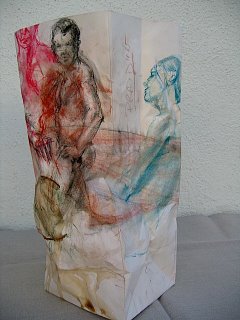
Whenever I ran into Schoffman in those early years when armies of artists colonized the dingy, derelict fringes of Paris hoping to run into the ghost of Henry Miller, he always claimed his latest work to be an abysmal failure. When he spoke, he was barely audible, a gravelly mumble would spill from his lips like a dying diesel. To call him depressive would simplify the quirky sensitivity that determined his saturnine behavior. Artists like Schoffman believe that nothing short of the fate of Western Civilization is at stake when they enter the studio.
He disapproved of my work. “Malaspina,” he used to say, “You are pandering to the trivial tastes of the rabble with these bloated confections.” I wanted to tear out his liver. At the time, the name “Currado Malspina” was beginning to boil throughout Europe and the thought that my work was anything less than brilliant was an impossible fantasy only a madman dare entertain. Schoffman was anything but a madman, but at the time he certainly was a jackass.
The image above is an example of one of the pieces from the period in question.



